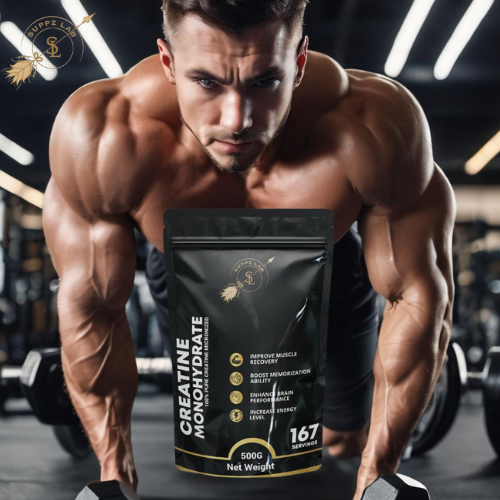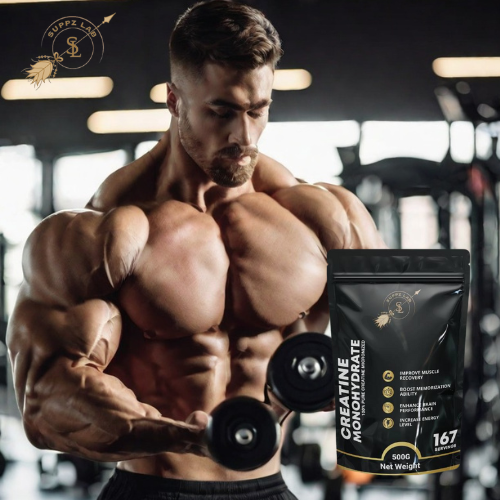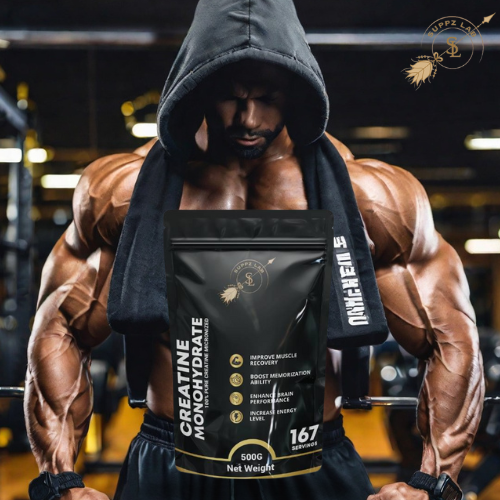Creatine's Strengths: An Introduction to Its Building Muscle Benefits
Of all the supplements available on the market, creatine is one of the best-researched and most successful when it comes to increasing muscle development and improving athletic performance. It comes from specific meals and is a natural substance that our systems create. In today’s blog, We’ll dive into the mysterious world of creatine, and we’ll learn about its various uses that help in muscle building as well as how it works.
What is Creatine?
Before I start this blog, I need to tell you that Creatine is an organic compound that is present in tiny amounts in animal-based foods like meat and fish. Our body also produces it in the liver as well as kidneys and pancreas. Creatine contributes to energy synthesis in the body, especially in the muscles. Athletes and bodybuilders often utilize supplementary creatine in the shape of monohydrate form to improve muscle development, strength, and performance.
Understanding Creatine:
During actions requiring brief bursts of strength, the muscles store creatine, which is then used as a rapid source of energy. It increases adenosine triphosphate (ATP) synthesis, which is the body’s main energy source, and enables muscles to work harder and recover more quickly. Let us see how creatine develops our muscles.
1. Enhanced ATP Production:
First will be increasing ATP production, taking supplements of creatine will increase the amount of ATP produced, giving muscles the energy they require to engage in high-intensity activity. People may lift bigger weights and complete more repetitions with this extra energy, which promotes muscular growth.
2. Improved Muscle Hydration:
Secondly, Creatine transfers water into muscle cells which can increase the number of cells and improve muscular hydration. This cell volumization not only makes muscles seem fuller but also promotes muscular development by activating cellular processes that stimulate protein synthesis.
3. Enhancement of High-Intensity Performance:
Third, During high-intensity activities, creatine quickly restores ATP, which delays muscular tiredness. So that people can push themselves further and maintain high levels of effort for longer because of this delay. As time passes, creatine helps produce more noticeable and long-lasting muscular growth by continuously testing muscles during exercise.
4. The Synthesis of Proteins Increased:
Fourth, Studies have shown that supplementing with creatine may improve the process of protein synthesis, which is how the body creates new muscular tissue. Creatine helps muscles develop and repair after hard workout sessions by boosting protein synthesis, which results in increases in muscular mass and strength.
5. Muscle Regrowth:
Last but not least, Creatine has been related to less muscular injury and soreness following strenuous exercise. This means faster recovery periods between exercises, allowing people to exercise more often and regularly, which is critical for long-term muscular growth.
Conclusion
Including creatine in your exercise routine can improve muscle development and endurance. Due to its ability to increase protein production, improve in intensity, enhance post-exercise recovery, and efficiency, improve muscle hydration, and boost ATP synthesis, it is an invaluable tool that benefits exercisers and players. Start your journey with our supplement Suppz Lab Creatine Monohydrate to maximize the advantages and improve your workout capacity.




One Response to Creatine’s Strengths: An Introduction to Its Building Muscle Benefits
Hi, this is a comment.
To get started with moderating, editing, and deleting comments, please visit the Comments screen in the dashboard.
Commenter avatars come from Gravatar.